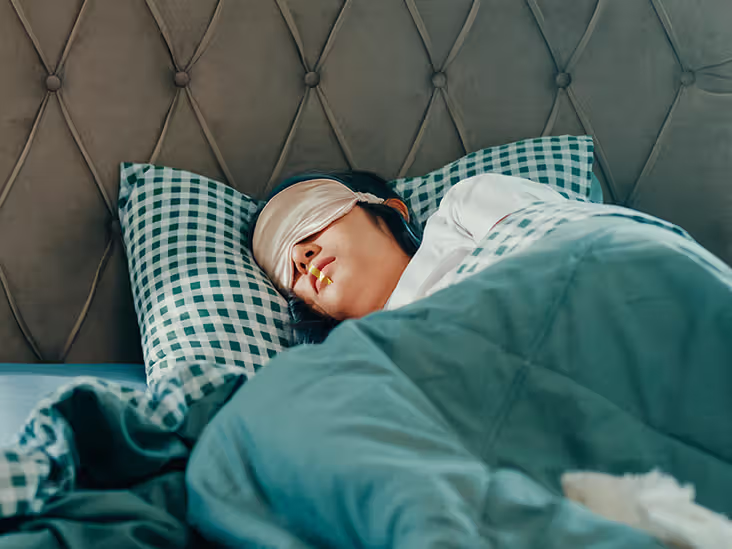I’ll let you in on a little secret: I used to be the world’s worst sleeper. Staring at the ceiling at 2 a.m., counting imaginary sheep, and wondering if I’d ever drift off was my nightly ritual. After years of trial and error, I’ve learned a thing or two about beating insomnia, and I’m excited to share nine proven techniques that transformed my restless nights into peaceful slumbers. Whether you’re battling stress, a racing mind, or just bad habits, this guide will walk you through practical, science-backed ways to fall asleep faster and wake up refreshed. Let’s dive into these sleep-saving strategies, complete with personal anecdotes, expert tips, and a touch of humor to keep you engaged.
Why Can’t You Sleep? Understanding Insomnia
Insomnia affects millions, with studies showing 30% of adults experience occasional sleeplessness. It’s often triggered by stress, poor sleep hygiene, or medical conditions like anxiety or sleep apnea. Identifying the root cause is the first step to finding relief, and these techniques target common culprits to help you reclaim your rest.
Common Causes of Sleeplessness
Stress, screen time, caffeine, and irregular schedules can wreak havoc on your sleep cycle. For me, late-night scrolling on my phone was a major offender—those cat videos were just too tempting. Other factors like diet, exercise, and even room temperature play a role, which we’ll address in these techniques.
The Impact of Poor Sleep
Lack of sleep doesn’t just make you grumpy; it impairs focus, weakens immunity, and increases stress hormones. I once pulled an all-nighter for work and felt like a zombie for days. Chronic insomnia can even raise risks for heart disease and depression, making it crucial to act fast.
Technique 1: Create a Sleep-Friendly Environment
Your bedroom should be a sanctuary for sleep, not a multipurpose office-gym-entertainment hub. Dim lights, a cool temperature (60–67°F), and minimal noise set the stage for rest. I transformed my bedroom by ditching the clutter and investing in blackout curtains, and it felt like a game-changer.
Optimize Lighting
Bright lights suppress melatonin, the hormone that signals sleep. Use dim, warm-toned bulbs or blue-light-blocking glasses in the evening. I started wearing amber glasses while reading, and it helped me wind down faster than ever.
Control Noise and Temperature
White noise machines or earplugs can drown out distractions, while a fan keeps the room cool. My neighbor’s dog used to bark all night, but a $20 white noise machine became my best friend. Aim for a bedroom temperature that feels slightly chilly for optimal comfort.
Technique 2: Establish a Consistent Sleep Schedule
Going to bed and waking up at the same time daily regulates your body’s internal clock. Even on weekends, try to stick within a 30-minute window of your usual schedule. I used to sleep in until noon on Sundays, but syncing my routine cut my fall-asleep time in half.
Why Consistency Matters
Your body thrives on predictability, syncing sleep hormones like melatonin to a regular rhythm. Irregular schedules confuse your brain, making it harder to drift off. After committing to a 10 p.m. bedtime, I noticed I was nodding off within 15 minutes.
Tips for Sticking to It
Set a bedtime alarm to remind you to wind down, and avoid naps longer than 20 minutes. I use a simple app called Sleep Cycle to track my schedule, which keeps me accountable. If you travel, adjust gradually to new time zones to minimize disruption.
Technique 3: Practice the 4-7-8 Breathing Method
The 4-7-8 breathing technique, developed by Dr. Andrew Weil, is a simple way to calm your nervous system. Inhale for 4 seconds, hold for 7, and exhale for 8, repeating 4–8 times. I tried this during a stressful week, and it was like hitting a reset button for my brain.
How It Works
This method slows your heart rate and reduces anxiety, signaling to your body it’s time to relax. It’s rooted in pranayama, a yogic breathing practice, and studies show it lowers stress hormones. I now use it nightly, and it’s become my go-to for quieting a racing mind.
Step-by-Step Guide
Sit or lie comfortably, place your tongue behind your upper teeth, and inhale quietly through your nose for 4 seconds. Hold your breath for 7 seconds, then exhale audibly for 8 seconds. Repeat until you feel calm, usually within a minute or two.
Technique 4: Limit Screen Time Before Bed
Blue light from phones, tablets, and TVs tricks your brain into thinking it’s daytime, delaying melatonin production. Aim to avoid screens 1–2 hours before bed. I used to binge Netflix until midnight, but swapping my phone for a book made falling asleep so much easier.
The Science of Blue Light
Research from Harvard shows blue light suppresses melatonin twice as much as other light wavelengths. Even 30 minutes of screen time can delay sleep onset by an hour. Blue-light-blocking glasses or phone filters can help, but going screen-free is most effective.
Alternatives to Screens
Try reading a physical book, journaling, or listening to calming music. I started reading mysteries by candlelight, which felt indulgent and relaxing. If you must use a device, enable night mode and keep brightness low to minimize impact.
Technique 5: Try Progressive Muscle Relaxation (PMR)
Progressive muscle relaxation involves tensing and releasing muscle groups to ease physical tension and calm the mind. Start at your toes and work up to your head, tensing each muscle for 5 seconds before relaxing. I discovered PMR during a yoga class, and it’s now my secret weapon for restless nights.
Benefits of PMR
PMR reduces stress hormones and promotes a sense of calm, helping you drift off faster. Studies show it’s effective for insomnia, especially when paired with deep breathing. It’s simple, free, and works wonders for tense shoulders after a long day.
How to Do It
Lie down in a quiet space, close your eyes, and tense your toes for 5 seconds, then release. Move to your calves, thighs, and so on, up to your face. I focus on my jaw, which I didn’t realize I clenched until I tried this technique.
Technique 6: Avoid Stimulants Late in the Day
Caffeine, nicotine, and even alcohol can sabotage your sleep. Caffeine’s effects can last 6–8 hours, so skip that afternoon espresso. I used to sip coffee at 4 p.m., thinking it was harmless, but cutting it out after noon was a revelation for my sleep.
Timing Your Caffeine
A 2023 study found caffeine consumed 6 hours before bed reduces sleep by up to an hour. Stick to morning coffee or switch to decaf after lunch. I now enjoy herbal tea in the evenings, which feels cozy without the jitters.
Other Stimulants to Watch
Alcohol may make you drowsy but disrupts REM sleep, leaving you groggy. Nicotine, too, is a stimulant that can keep you wired. If you’re a smoker or drinker, try cutting back 3–4 hours before bed for better rest.
Technique 7: Use Visualization or Guided Imagery
Visualization involves imagining a peaceful scene, like a beach or forest, to distract from racing thoughts. Guided imagery apps or recordings can enhance the experience. During a particularly anxious period, picturing myself on a quiet lake helped me drift off in minutes.
How Visualization Helps
By engaging your brain’s creative side, visualization reduces stress and shifts focus from worries. Research shows it lowers cortisol levels, promoting relaxation. I imagine kayaking under a starry sky, which feels like a mini-vacation in my mind.
Getting Started
Choose a calming scene, close your eyes, and focus on sensory details—sounds, smells, textures. Apps like Calm or Headspace offer guided sessions, or try YouTube for free options. I started with a 5-minute beach meditation, and it’s now a nightly ritual.
Technique 8: Limit Food and Drink Before Bed
Heavy meals or excessive liquids close to bedtime can disrupt sleep, causing indigestion or bathroom trips. Eat dinner 2–3 hours before bed and avoid spicy or fatty foods. I learned this the hard way after a late-night pizza binge left me tossing and turning.
Foods to Avoid
Spicy foods, citrus, and high-fat meals can trigger acid reflux, keeping you awake. Alcohol and sugary snacks also disrupt sleep cycles. Opt for light snacks like a banana or yogurt if you’re hungry before bed.
Hydration Tips
Stay hydrated during the day but taper off liquids an hour before bed to avoid nighttime bathroom runs. I keep a small glass of water by my bed for emergencies but avoid chugging it. Herbal teas like chamomile can double as a calming pre-sleep ritual.
Technique 9: Try a Sleep Supplement (With Caution)
Natural supplements like melatonin, valerian root, or magnesium can aid sleep, but they’re not a cure-all. Melatonin, for instance, helps reset your sleep cycle but works best for short-term use. I tried melatonin during a stressful move, and it helped me adjust, but I stopped after a week to avoid dependency.
Choosing the Right Supplement
Consult a doctor before trying supplements, as they can interact with medications. Melatonin (1–3 mg) is effective for jet lag or shift work, while magnesium supports muscle relaxation. I found magnesium gummies calming but skipped valerian due to its strong smell.
Risks and Considerations
Overuse of melatonin can disrupt natural hormone production, and herbal supplements may cause side effects like dizziness. Always start with a low dose and monitor how your body responds. I stick to supplements sparingly, relying on other techniques for long-term success.
Comparison: Quick Fixes vs. Long-Term Strategies
| Technique | Time to See Results | Best For | Effort Level |
|---|---|---|---|
| 4-7-8 Breathing | Immediate | Anxiety, racing thoughts | Low |
| Sleep Schedule | 1–2 weeks | Irregular sleepers | Medium |
| Screen Time Reduction | 1–2 nights | Blue light sensitivity | Medium |
| PMR | Immediate | Physical tension | Low |
| Visualization | Immediate | Stress, overthinking | Low |
Personal Take: Quick fixes like breathing or PMR are great for immediate relief, but a consistent sleep schedule and screen limits were my long-term saviors. Mix and match based on your needs—there’s no one-size-fits-all solution.
Pros and Cons of These Sleep Techniques
Pros
- Accessible: Most techniques are free or low-cost, like breathing or visualization.
- Science-Backed: Supported by studies from institutions like Harvard and the National Sleep Foundation.
- Customizable: Tailor techniques to your lifestyle, whether you’re a busy parent or a night owl.
- No Side Effects: Non-invasive methods like PMR or schedules avoid medication risks.
- Holistic Benefits: Many, like breathing, also reduce daytime stress and anxiety.
Cons
- Time Investment: Building a sleep schedule or learning PMR takes practice.
- Consistency Required: Results fade if you skip nights or revert to bad habits.
- Not Universal: Supplements or visualization may not work for everyone.
- Initial Effort: Setting up a sleep-friendly bedroom requires upfront work or cost.
People Also Ask (PAA)
What is the fastest way to fall asleep?
The 4-7-8 breathing technique or progressive muscle relaxation can help you fall asleep in minutes by calming your nervous system. Practice nightly for best results, starting with just a few cycles to ease into sleep.
How can I stop my mind from racing at night?
Visualization or guided imagery, like imagining a peaceful scene, distracts from racing thoughts. Pair with deep breathing or journaling before bed to offload worries and promote calm.
Are sleep supplements safe to use every night?
Melatonin is safe for short-term use (1–3 mg), but long-term use may disrupt natural hormone production. Consult a doctor and prioritize non-supplement techniques like sleep hygiene for sustained results.
How does screen time affect sleep?
Blue light from screens suppresses melatonin, delaying sleep onset by up to an hour. Avoid screens 1–2 hours before bed or use blue-light-blocking glasses to minimize disruption.
Tools and Resources for Better Sleep
- Sleep Tracking Apps: Sleep Cycle or Fitbit track sleep patterns to identify issues.
- White Noise Machines: Models like LectroFan (around $40) block disruptive sounds.
- Blue-Light Glasses: Affordable options on Amazon reduce screen-related sleep delays.
- Guided Meditation Apps: Calm or Headspace offer sleep-focused sessions for $10–$15/month.
- Comfortable Bedding: Invest in a cooling mattress or pillows from brands like Tempur-Pedic.
Where to Start: I recommend starting with a free app like Insight Timer for guided meditations or a $10 pair of blue-light glasses from Amazon. For bedding, check local stores like Target for budget-friendly options.
FAQ: Tackling Sleeplessness
1. How long does it take for these techniques to work?
Quick fixes like 4-7-8 breathing or PMR can work immediately, while sleep schedules take 1–2 weeks. Consistency is key—combine methods for faster, lasting results.
2. Can I combine multiple sleep techniques?
Yes, pairing techniques like a sleep schedule with PMR or visualization enhances effectiveness. I use breathing and a screen-free routine together for a one-two punch against insomnia.
3. What if these techniques don’t work for me?
If sleeplessness persists, consult a doctor to rule out conditions like sleep apnea or anxiety. A sleep specialist can recommend tailored solutions, like cognitive behavioral therapy for insomnia (CBT-I).
4. Are there foods that help with sleep?
Foods like bananas, almonds, or chamomile tea promote relaxation due to melatonin or magnesium. Eat light snacks 2–3 hours before bed to avoid indigestion.
5. Where can I find reliable sleep advice?
Check the National Sleep Foundation, Harvard Health, or Mayo Clinic for evidence-based tips. Apps like Calm or local sleep clinics offer personalized guidance.
Why Better Sleep Is Worth the Effort
After years of battling insomnia, these nine techniques turned my nights around, and I wake up feeling like I can conquer the world (or at least my inbox). From breathing exercises to a screen-free wind-down, each method offers a piece of the puzzle for restful sleep. My favorite moment? When my daughter caught me doing 4-7-8 breathing and joined in, giggling as we exhaled together—it’s now our nightly ritual. If you’re lying awake, frustrated, give these a try. You might just find yourself dreaming of that beach scene instead of counting sheep.


